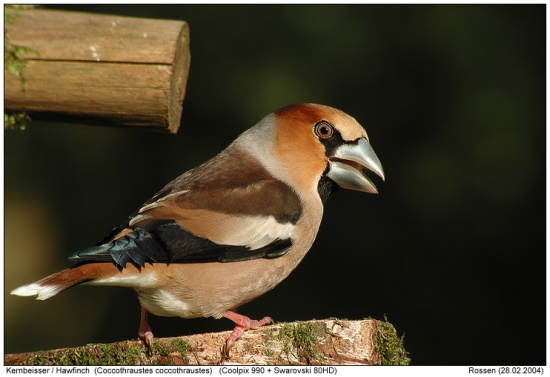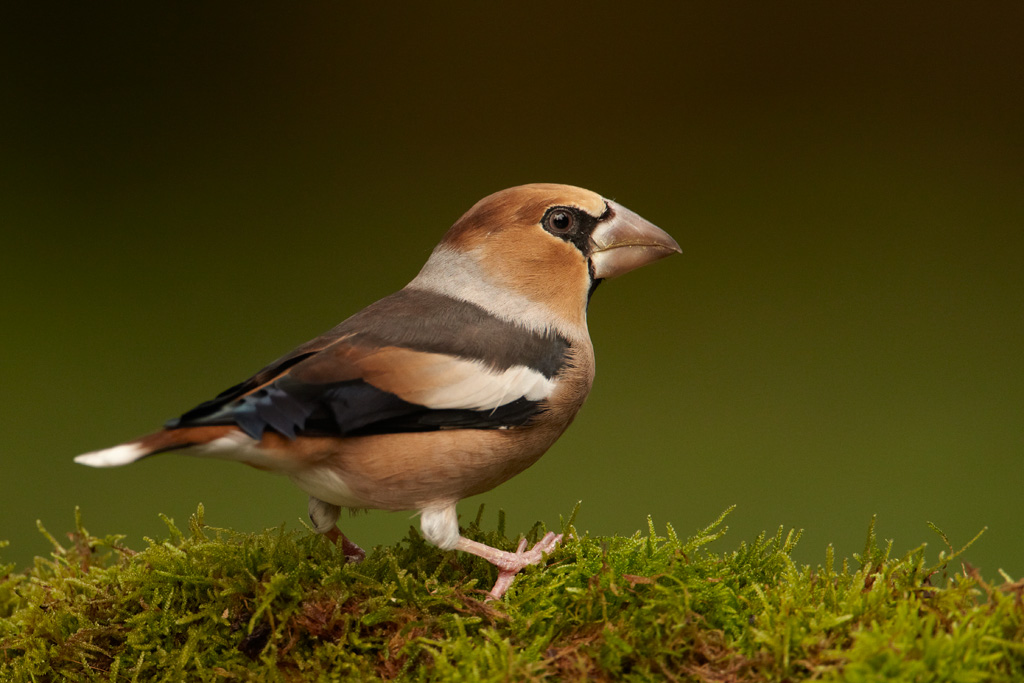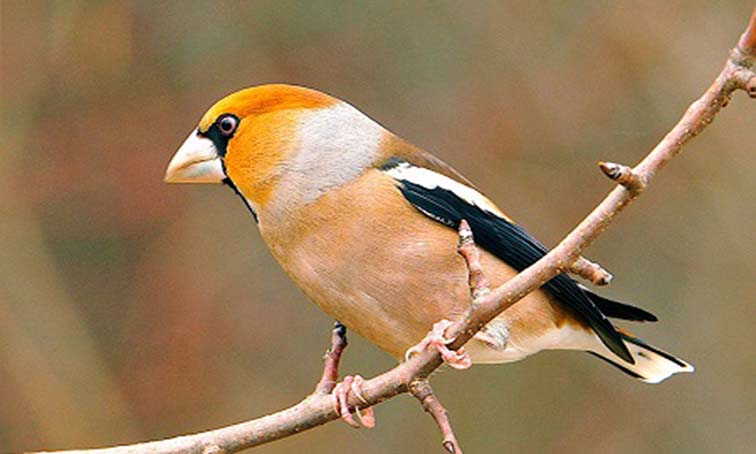
Coccothraustes coccothraustes
SUBFAMILY
Carduelinae
TAXONOMY
Coccothraustes coccothrauses Linnaeus, 1758. Three subspecies are
recognized.
OTHER COMMON NAMES
French: Grosbec; German: KernbeiЯer; Spanish: Picogordo.
PHYSICAL CHARACTERISTICS
Hawfinches are relatively large, heavy-bodied birds with a massive
beak; they have a stocky, top-heavy appearance. Their
body length is about 7 in (18 cm) and they weigh about 1.9 oz
(54 g). The male has a black back, wings, and tail, is chestnut
on the head and belly, and has a black chin and blue beak. The
female is somewhat duller. The massive beak and skull design
allow hawfinches to crack open large, tough seeds, such as
those of cherries and olives.
DISTRIBUTION
Hawfinches are found throughout much of the temperate and
southern boreal regions of Europe and Asia.
HABITAT
Hawfinches occur in hardwood and mixedwood forests of various
kinds, in addition to well-vegetated parks and gardens.
BEHAVIOR
Hawfinches are shy birds that are wary of noise and movement.
The male has a rather soft, feeble song that is used to
defend its breeding territory.
FEEDING ECOLOGY AND DIET
Hawfinches eat seeds and fruit, including tough nuts and fruitstones.
They sometimes feed on the ground on fallen fruit, but
are wary when doing so.
REPRODUCTIVE BIOLOGY
Hawfinches have an elaborate courtship ritual, involving the
drooping of a wing to display iridescent purple and green flight
feathers. The male also bows deeply to a prospective mate and
tucks his beak under his belly, revealing a gray nape patch.
Aerial chases between a male and female are also part of pair
formation. Hawfinches often breed in loose colonies. Their
small, cup-shaped nest is built of roots, twigs, and lichens. It is
lined with plant fibers, hair, and rootlets, and placed low in a
tree. Three to seven greenish eggs with blackish brown markings
are incubated for 9–14 days, mostly by the female. The
young are brooded by the female and tended by both sexes.
Fledging occurs in 10–14 days.
CONSERVATION STATUS
Not threatened. Hawfinches are a widespread and abundant
species, but they are vulnerable to habitat loss due to logging
operations.
SIGNIFICANCE TO HUMANS
None known.
Other popular Animals
Photo Gallery of - Hawfinch




 Animalia Life
Animalia Life